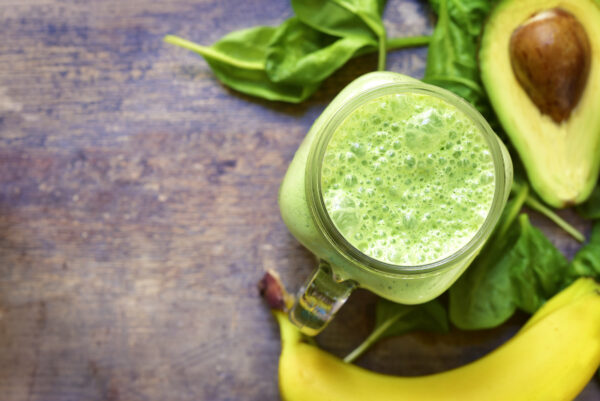Perhaps we need to put some banana peels in with my grapefruit peels as well. One of my ongoing research endeavers is to produce an elixer similar to that used by the Greek pantheon. Inasmuch as those folks were human beings gifted with a long life and likely access to the INNER SUN. it follows that they would need such an elixer.
Putting in ascorbic asid was obvious. Then using tumeric and ginger and pepper as well works too. Other peels do need to at least be considered. So bananas and dandelions leap to mind.
sooner or later this needs to be properly analyzed and tested up.
Could This Vitamin Slow Brain Aging and Ward Off Alzheimer’s?
May 1 2023
https://www.theepochtimes.com/health/could-this-vitamin-slow-brain-aging-and-ward-off-alzheimers_5231865.html?
A form of vitamin B3, and precursor to NAD+, may play a key role in modifying neurodegenerative diseases and protecting brain health in adults.
STORY AT-A-GLANCEThe trace nutrient nicotinamide riboside (NR), a precursor of nicotinamide adenine dinucleotide (NAD+) and a form of vitamin B3, may help slow brain aging.
NR may help to boost levels of NAD+, which typically declines in the brain with age, leading to metabolic and cellular dysfunction.
The NAD+ precursor niacinamide is also beneficial, but it’s not widely promoted because it costs much less than other NAD+ precursors, including NR.
Since NAD+ declines with age, boosting it has been described as a fountain of youth for extended lifespan and increased resilience to disease.
Vitamins B6, B9 (folate), and B12 are also important for supporting cognitive function as you age and have been shown to play a major role in the development of dementia.
When you eat a varied diet based on whole foods, your body enjoys access to the myriad nutrients contained therein. The trace nutrient nicotinamide riboside (NR), a precursor of nicotinamide adenine dinucleotide (NAD+) and a form of vitamin B3, is among them.
Found in milk as well as in supplement form, NR may help to boost levels of NAD+, which typically declines in the brain with age, leading to metabolic and cellular dysfunction.[1] By raising NAD+ levels, NR may modify neurodegenerative disease in humans, helping to slow brain aging.
NR Restores NAD+ in the Brain
NAD+ modulates energy production and many enzymes and in so doing controls hundreds of processes in your body including the survival of cells and energy metabolism.
NAD+ is influenced on a daily basis by what you eat, exercise levels, and more, and also declines with age, leading to changes in metabolism and an increased risk of disease.[2] Dr. Christopher Martens, director of the Delaware Center for Cognitive Aging Research, told Medical News Today:[3]
“NAD+ is essential for cells to create energy and there is strong evidence from animal studies that aging and metabolic dysfunction results in a depletion of NAD+ within cells. Therefore, there is strong rationale that replenishing the NAD+ within the brain could have a positive effect on brain function.”
In a study published in the journal Aging Cell, Martens and colleagues found that NR supplementation increases NAD+ levels and lowers biomarkers of neurodegeneration in plasma extracellular vesicles enriched for neuronal origin (NEVs).[4]
Among the 22 older adults who took NR at a dosage of 500 milligrams twice a day for six weeks, NAD+ levels in NEVs increased while kinases involved in insulin resistance and neuroinflammatory pathways decreased.[5] The results suggest NR, by increasing NAD+, could help ward off Alzheimer’s disease. Martens explained in Medical News Today:[6]
“We don’t have definitive proof that the supplement itself crosses the blood-brain barrier, especially not from our data. What we do know is that taking the supplement results in an increase in NAD+ within tiny vesicles that likely originated in the brain and other neural tissue.
“This is one of the big challenges in the field—[d]etermining whether the compound can reach its intended target. [A]lthough we do not have direct evidence, the results of our study suggest that it is having an effect on the brain and also changing the metabolism of molecular pathways known to be involved in Alzheimer’s disease.
“… What’s really interesting is that we also found changes in more established markers of Alzheimer’s disease (e.g., amyloid beta) after taking the supplement.”

Vitamin B6 is plentiful in bananas and avocados (Liliya Kandrashevich/Shutterstock)
NR Is a Popular NAD+ Precursor
While there are multiple precursors to NAD+, including NR, niacin (NA), and niacinamide (NAM), NR offers a variety of significant health benefits, including:[7]Life extension—In yeast, NR elevates NAD+ and increases sirtuin 2 (SIRT2) function.[8] It’s through these increases in NAD+ and sirtuin 2 that calorie restriction is believed to help extend lifespan in mice as well.[9]
Protects against weight gain—NR supplementation in mice increased NAD+ levels and activated SIRT1 and SIRT3, leading to enhanced oxidative metabolism and protecting against metabolic abnormalities, including obesity. The researchers concluded, “Our results indicate that the natural vitamin NR could be used as a nutritional supplement to ameliorate metabolic and age-related disorders characterized by defective mitochondrial function.”[10]
Heart failure—In a mouse study, NR preserved cardiac function in mice with heart failure.[11]
Brain injury—NAD+ depletion is common in cases of neurodegeneration. In a mouse study, intracortical administration of NR helped protect against central brain injury.[12]
Noise-induced hearing loss—Administration of NR, even after exposure to loud noise, prevents noise-induced hearing loss by reducing neurite degeneration.[13]
Liver protection and anti-diabetes effects—In prediabetic mice, NR improved glucose tolerance and reduced weight gain and liver damage. It also prevented fatty liver and helped prevent sensory neuropathy. The researchers concluded the results justified testing NR in humans with obesity and Type 2 diabetes.[14]
Stem cell regeneration—Among mice exposed to radiation, oral NR improved survival and hematopoietic stem cell regeneration—a benefit that wasn’t seen in mice given NA or NAM.[15]
Reversal of chemotherapy-induced neuropathy—In rats, oral NR not only promoted resistance to chemotherapeutic neuropathy but also prompted its reversal.[16]
Reproductive benefits—Female mice and rats given NR had increased lactation and offspring with a number of health advantages, including increased strength, better memory, less anxiety, and enhanced body composition and hippocampal neurogenesis as adults.[17]
Is Boosting NAD+ a Fountain of Youth?
Since NAD+ declines with age, boosting it has been described as a fountain of youth for extended lifespan and increased resilience to disease. James Clement, author of “The Switch: Ignite Your Metabolism With Intermittent Fasting, Protein Cycling, and Keto,” conducted a clinical trial testing intravenous NAD+ in elderly people, in collaboration with Dr. John Sturges.
The infusion involved 1,000 mg of NAD+ per day for six days. Clement underwent the treatment and tremors he’d had since he was 20 went away. If you aren’t depleted in NAD+, 1,000 mg may be too much—and it’s also very expensive, at about $1,000 per IV—but many people are low in NAD+.
During our 2020 interview, Clement said NAD+ may be depleted by 50 percent by the time you’re 60 (compared to in your 20s or 30s), and when you’re 70 you may only have 10 percent of the amount you did when you were younger.
“And then at 80, there’s almost none,” he said, adding that this will seriously impair your body’s ability to repair broken DNA. “You can see how this huge build-up of damaged DNA in every cell of your body is potentially one of the driving forces of these morbidities that you see with aging, heart disease, cancer [and] Alzheimer’s …”
Have You Heard of Niacinamide?
The NAD+ precursor niacinamide is also beneficial, but it’s not widely promoted because it costs much less than other NAD+ precursors, including NR. At a cost of less than one cent a day, there is simply no money to be made in promoting it. However, you can buy niacinamide powder and use 1 to one-half of one-64th of a teaspoon three times a day (25 to 50 mg).
You will need special measuring spoons to measure this small a dose. This is important, as more is most definitely not better. If you use too much you will inhibit sirtuins, which are important longevity proteins.
Spending $11 on 250 grams of niacinamide powder will give you a nearly four-year supply. That pencils out to 23 cents a month—or less than one penny a day. It is basically free. NMN [nicotinamide mononucleotide] in therapeutic doses of 1 to 2 grams per day can be $100 to $200 a month, or 400 to 800 times more expensive than niacinamide powder.

Vitamin B12-rich food: wild sockeye salmon (By Elena Eryomenko/Shutterstock)
Natural Methods to Boost NAD+
While NAD+ precursors like NR and niacinamide are useful, there are also natural methods to protect and boost your levels, such as:Physical exercise—Naturally increases NAMPT [nicotinamide phosphoribosyltransferase] by activating AMPK, which in turn increases NAD+. Conlon cites research showing about three weeks of resistance training will boost NAMPT by about 127 percent, which again is far greater than what you can get from an NR supplement alone.
Fasting or time-restricted eating—Naturally increases NAMPT by activating AMPK, which in turn increases NAD+.
Circadian rhythm optimization, by going to bed at sunset and getting up at sunrise, and avoiding blue light after sunset, will have profound impacts on increasing NAMPT.
Avoid radiation exposure—To protect your NAD+ by preventing its consumption by PARPs (poly ADP ribose polymerases), consider avoiding EMFs [electromagnetic field] in the form of your cellphone, Wi-Fi, and other forms of DNA damaging radiation, such as unnecessary medical x-rays and CAT scans.
Sauna bathing—Heat stress helps boost NAD+
.
Other B Vitamins Involved in Alzheimer’s, Brain Health
It’s not only vitamin B3 that may protect your brain. Vitamins B6, B9 (folate), and B12 are also important for supporting cognitive function as you age and have been shown to play a major role in the development of dementia. As noted in a 2010 paper:[18]
“Deficiencies of the vitamins folate, B12, and B6 are associated with neurological and psychological dysfunction … In the elderly, cognitive impairment and incident dementia may be related to the high prevalence of inadequate B vitamin status and to elevations of plasma homocysteine.
“Plausible mechanisms include homocysteine neurotoxicity, vasotoxicity, and impaired S-adenosylmethionine-dependent methylation reactions vital to central nervous system function. In light of this, it is imperative to find safe ways of improving vitamin B status in the elderly …”
The good news is your body can eliminate homocysteine, which is associated with brain atrophy, cognitive impairment, and dementia,[19] naturally, provided you’re getting enough B9, B6, and B12. In fact, research published in PLOS One compared brain atrophy in participants taking folic acid (0.8 mg per day), vitamin B12 (0.5 mg per day), and vitamin B6 (20 mg per day) for 24 months with that in patients taking a placebo.[20]
Those taking B vitamins had a lower rate of brain atrophy per year—0.76 percent—than those not taking them, who had an atrophy rate of 1.08 percent. According to the researchers, “The accelerated rate of brain atrophy in elderly with mild cognitive impairment can be slowed by treatment with homocysteine-lowering B vitamins.”[21]
A 2013 study also showed that B vitamins slow brain shrinkage in brain regions known to be most severely impacted by Alzheimer’s disease and associated with cognitive decline.[22]
Be aware that the U.S. Food and Drug Administration granted fast-track designation to UB-311, a vaccine for Alzheimer’s disease made by biotechnology company Vaxxinity.[23] The shot is an anti-amyloid beta immunotherapeutic vaccine that reportedly treats Alzheimer’s disease by targeting aggregated amyloid beta in the brain.
Aside from the potential problems that can arise when a vaccine is rushed to market, the vaccine may be problematic because amyloid beta may be a symptom of Alzheimer’s—not the cause—and could even have a protective role in the disease process.[24]

Vitamin B3 is found in grass fed beef and mushrooms (Eberly Film Labs for The Daily Meal. Shannon Kinsella, food styling)
Food Sources of B Vitamins
A better protective strategy for brain health may be to increase your intake of B vitamins, which can be done via supplements or foods. Vitamin B3 is found in grass fed beef, mushrooms, and avocados,[25] while vitamin B6 is plentiful in grass fed beef, potatoes, bananas, and avocados.[26] You can find folate, or vitamin B9, spinach, broccoli, avocado, and asparagus.[27]
Vitamin B12-rich foods include grass-fed beef liver, wild rainbow trout, and wild sockeye salmon. For more serious deficiency you may need weekly shots of vitamin B12 or daily high-dose B12 supplements. If you choose a supplement, methylcobalamin, which is the naturally occurring form found in food, is more absorbable and your body retains it in greater amounts than cyanocobalamin, the form of B12 found in most supplements.[28]
Beyond B vitamins, nourishing your brain health is best done with a comprehensively healthy lifestyle, including the use of exercise, ketogenic diet, time-restricted eating, optimizing vitamin D, and other hormones, increasing sleep, meditation, detoxification, and eliminating processed food.
Originally published Mar 22, 2023, on Mercola.com
◇ References:
[8] Cell May 4, 2007

No comments:
Post a Comment